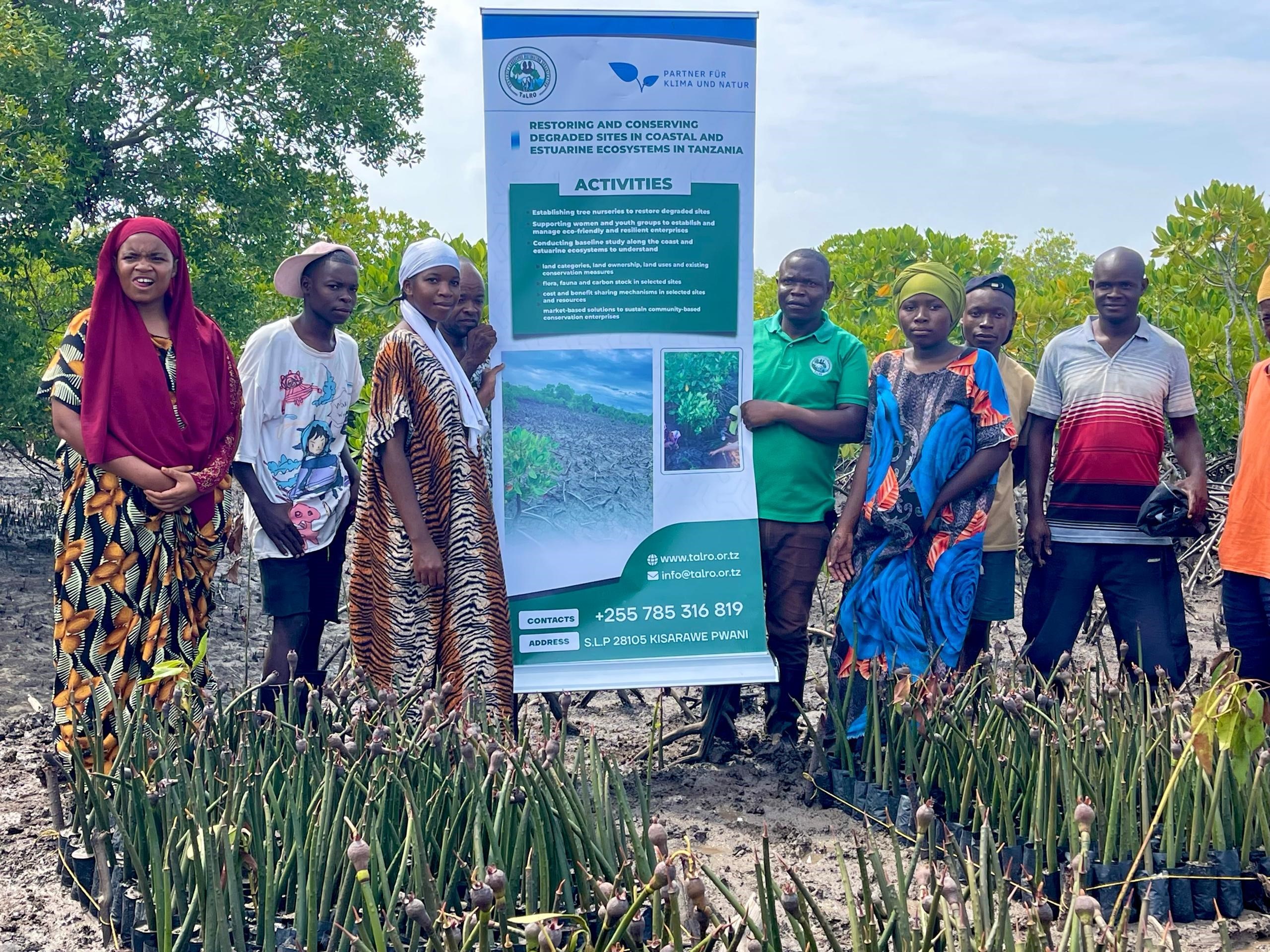





The Tanzania Landscapes Restoration Organization (TaLRO) implemented a project to restore degraded sites in the Pugu-Kazimzumbwi Nature Forest Reserve (PKNFR) by planting 10,200 native trees. Funded by UNDP through the GEF Small Grants Program, the project aimed to conserve biodiversity, secure ecosystem services, and support local livelihoods. Key activities included site selection, community engagement, seedling collection, planting, and post-planting care such as watering and firebreak creation. Challenges included wildfires, water scarcity, and limited community support in some areas. Despite these, the project achieved high survival rates for resilient species like Afzelia quanzensis and engaged villages like Maguruwe and Vibura in restoration efforts. Recommendations include sustaining monitoring, establishing permanent water sources, and promoting eco-friendly enterprises to incentivize conservation.
Plant 10,000+ native trees in PKNFR to combat deforestation and degradation.
Mobilize local communities (e.g., Maguruwe, Vibura) to participate in restoration and conservation.
Enhance ecosystem resilience by reintroducing native species like Afzelia quanzensis and Dalbergia melanoxylon.
Address challenges like wildfires and water scarcity through firebreaks and temporary wells.
Explore nature-based enterprises (e.g., beekeeping) to incentivize community involvement.
✅ Recommendations
✅ Conclusion
The project successfully restored degraded areas in PKNFR, leveraging community collaboration and adaptive strategies. However, sustained efforts are needed to address wildfires, water scarcity, and equitable community benefits. TaLRO’s work lays a foundation for long-term forest recovery and biodiversity conservation, aligning with global environmental goals.